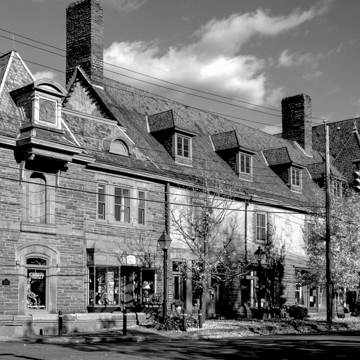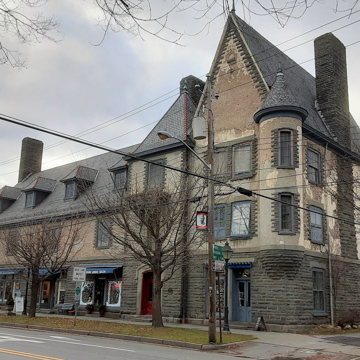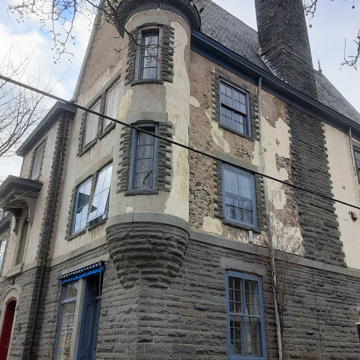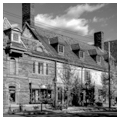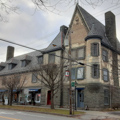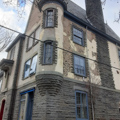Milford's small-town character scarcely prepares for the sight of this spectacular Norman Revival landmark that was built from plans of architect Richard Morris Hunt's sons and paid for by James Pinchot. Pinchot had funded the establishment of the Yale School of Forestry in 1900 and provided this building to house the necessary classrooms and auditorium for summer fieldwork in the local forests. The students lived in woodland camps a mile away on the Pinchot estate. With its cleft bluestone base and trim, natural stucco walls, and steep slate roof, it gives the town center a taste of the Norman villages that young architectural students were discovering on the grand tour after the Civil War, even as it celebrated the Pinchot family's French roots. They had fled France in the aftermath of Napoleon's downfall when, according to family history, they were seeking to help Napoleon escape one more time. Foresters’ Hall occupies the site of the store run by the family in the New World. It is now an antique mall that provides access to the great second-story hall that justifies the immense roof.
You are here
Foresters’ Hall
If SAH Archipedia has been useful to you, please consider supporting it.
SAH Archipedia tells the story of the United States through its buildings, landscapes, and cities. This freely available resource empowers the public with authoritative knowledge that deepens their understanding and appreciation of the built environment. But the Society of Architectural Historians, which created SAH Archipedia with University of Virginia Press, needs your support to maintain the high-caliber research, writing, photography, cartography, editing, design, and programming that make SAH Archipedia a trusted online resource available to all who value the history of place, heritage tourism, and learning.















